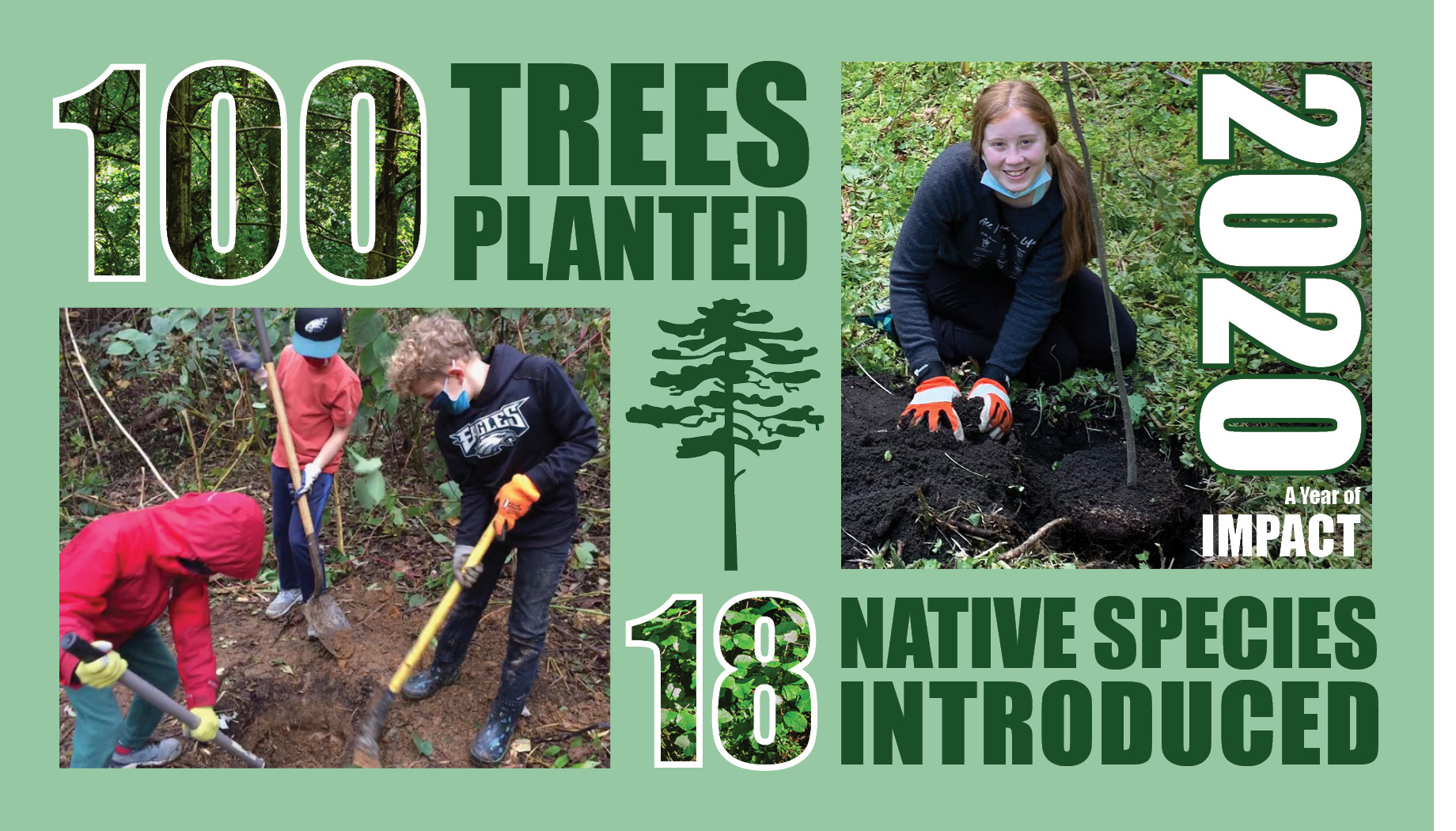
In a year of unprecedented challenges, WRV found ways to continue our mission to restore the natural areas of Wissahickon Valley Park.
Despite the onset of a global pandemic, WRV was still able to find creative ways to increase the tree canopy in the park, as well as reduce the overgrowth of invasive plant species and plant native shrubs in their place.
Since we were not able to implement the many volunteer projects we had planned for the year, we launched the One Tree at a Time initiative, in which members of the WRV leadership — working singly or with members of their households — “adopted” key restoration sites, removing invasive vegetation and planting native trees near Historic Rittenhouse Town, Hermit’s Cave, and Kitchens Lane. As the summer progressed we were able to train and provision other volunteers to participate in this safe, socially distanced initiative.
 As summer turned to autumn, we were able to organize small masked and socially distanced volunteer crews to participate in important restoration efforts, including the Gene Bishop Memorial Project which established a new restoration site near Monastery Stables. 40 native trees and shrubs were planted, representing 12 species, including gray birch, bigtooth aspen, and American elderberry.
As summer turned to autumn, we were able to organize small masked and socially distanced volunteer crews to participate in important restoration efforts, including the Gene Bishop Memorial Project which established a new restoration site near Monastery Stables. 40 native trees and shrubs were planted, representing 12 species, including gray birch, bigtooth aspen, and American elderberry.
The Sam Ozer Memorial Project established a significant new planting near Historic Rittenhousetown. In only three days, small volunteer crews worked in shifts to plant 50 trees and shrubs representing 13 species, including hackberry, American basswood, and pawpaw. In an area previously blanketed by a dense thicket of invasive plants, a small native forest — Sam’s Forest — is beginning to grow.
In addition to continuing restoration, 2020 has been a time to take stock of the work that dedicated WRV volunteers have done over our 23-year history, and to draw lessons from the past as we chart a course for the future.
 We’ve begun an ambitious data collection project that involves surveying past planting sites and implementing new record-keeping practices. Our tree tagging program allows us to develop an understanding of the survival and growth rates of the various species at our sites over the long term.
We’ve begun an ambitious data collection project that involves surveying past planting sites and implementing new record-keeping practices. Our tree tagging program allows us to develop an understanding of the survival and growth rates of the various species at our sites over the long term.
Although we got off to a good start in the early spring, this year we have had to pause most of our programming because of the pandemic. In October we hosted a combined restoration crew and fund-raiser in the Hermit’s Cave area with Congregation Mishkan Shalom. This was the 14th Annual “Mishkanathon!” About 25 volunteer students and parents worked at our restoration site near the Hermitage, building deer guards, removing invasives, and planting canopy trees.
Download a PDF of the WRV 2020 Impact Report
Thank you for reading! Please consider supporting our work.
Your donation will help keep the Wissahickon green and diverse, and all donations are Tax deductible.

